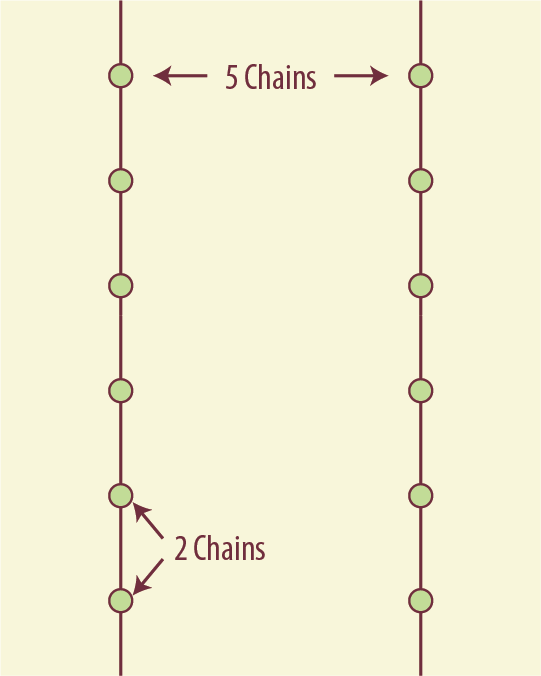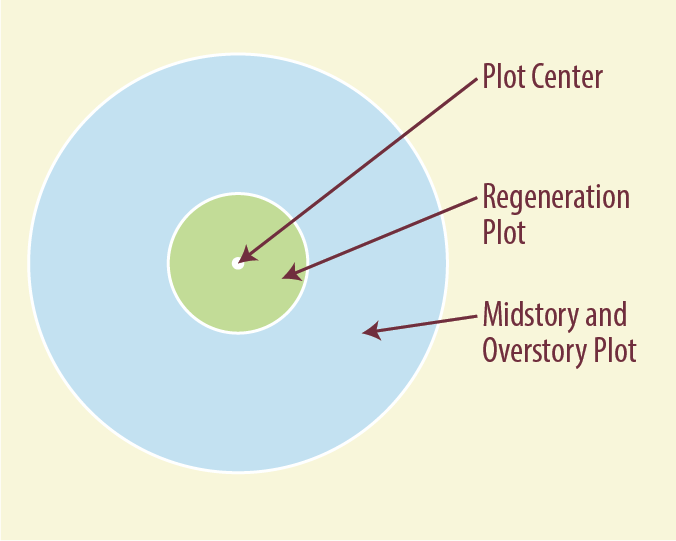Evaluating High-Graded Hardwood Stands
At some point, the majority of hardwood stands across the South have been high-graded, and hardwood forests in Mississippi are no different. A high-graded hardwood stand is one in which most or all of the high-valued, desirable trees with quality stem form have been cut, leaving a stand of either poorly formed desirable trees or undesirable trees.
How and when did this happen? Is there anything that can be done with these stands, or are they the management nightmare they appear to be? Most high-graded hardwood stands are the result of repeated cuttings, with little consideration for future stands or regeneration. Almost all of these past harvests were performed as “diameter limit cuttings” and were completed under the guise of forest management. Landowners thought large trees were old trees and removed them to give room for young trees to develop. This type of harvest has been practiced in Mississippi for at least 150 years.
We now know that small trees are not necessarily young trees, and that cutting only the biggest and best trees results in an undesirable situation from a timber management standpoint. For more information on diameter limit cutting, read MSU Extension Publication 3451 Hardwoods: What Is High-Grading?
In addition to poor past harvesting practices, diseases, insects, and, to a lesser extent, fire have had negative impacts in these hardwood stands. Typically, high-graded stands consist of a combination of residual stems from the previous stand, a high proportion of undesirable shade-tolerant species, and some desirable species regrowth. In some cases, large-diameter stems of desirable species may be present, but upon inspection, often these stems have serious defects that resulted in the stems being left in earlier cuts.
Management Options
Managing high-graded hardwoods is challenging and complex because of the number of species involved and their interrelationships. These interrelationships yield numerous complicated management options. Usually there are two major options—rehabilitate or regenerate. Rehabilitation includes two primary management operations:
- Proper use of the current stand to improve growth and development of existing trees.
- Timber stand improvement activities that control undesirables and promote growth and development of desirable trees.
To rehabilitate a stand, we must assume that a manageable stand of crop trees exists, which may or may not be true. If there is not a manageable stand of desirable crop trees, the stand needs to be regenerated.
If you choose to regenerate, natural or artificial regeneration are options, or a combination of the two may be necessary. The most important factor in a decision to regenerate is the viability of a stand for future and/or prolonged management. That may not be good news to owners of these high-graded stands, but these stand conditions did not develop overnight. In many cases, poor quality of the existing stand is the direct result of decades of mismanagement. Drastic measures are often required to get the stand back into good timber production.
Stand Evaluation
Before deciding whether regeneration or rehabilitation is the right choice, the landowner must first evaluate the current stand conditions. This evaluation should be based on the following six criteria:
- site quality
- manageable trees
- cull trees
- undesirable species
- advance regeneration
- age
Site Quality
The potential for management of any hardwood stand is always directly tied to the quality of the site. Usually, a number of different species are involved in hardwood management, whereas only one pine species would typically be considered for planting a large area.
Site quality becomes a species consideration as much as a characterization of physical properties of the area. For example, an average site for some oak species might actually be a poor site for yellow poplar. It is important that species be properly matched to the site to achieve optimal production.
In most site quality evaluations, a ranking of five classes is used. Terminology may vary, but the comparative evaluation remains the same. One example would be to have poor, below average, average, above average, and excellent classes.
The principal method for evaluating site quality has historically been the use of site index, which is a measure of site productivity. A major problem with using site index in high-graded stands is the tendency to underestimate a site’s true productive potential. This is because past cutting practices have promoted slower growing and lower quality trees. If site index is used for evaluating site quality, it is very important that you use the proper species curves (these vary by region for hardwoods). To get a proper evaluation, you must carefully select trees to be used.
An alternative to using site index is to refer to soil classification and description of soil series appropriate to the site. Soil series descriptions give site index for a number of appropriate species for that soil and can be used either independently or as a cross-reference to check on-site measurements.
Overall, forest management intensity should increase as site quality increases, and return on investment will decrease as site quality decreases. In a situation where management could be expensive, as is the case with many high-graded stands, it is important to evaluate expected return on investment before starting management activities.
Desirable Trees
Desirable trees in high-graded hardwood stands are key to the management process (Figure 2). Species present, as well as their numbers and distribution, are very important in this process. The minimum amount required for successful management really depends on landowner goals. Depending on which technical reference you use, minimum manageable basal area per acre (a measure of stand density) typically ranges between 35 square feet and 50 square feet.
Perhaps more important is the number of larger trees of desirable species. Here is a helpful rule of thumb: the minimum number of small sawlog-size trees that represents a manageable stand is 50 trees per acre. This rule assumes that longer-term management is desirable and proper rehabilitation processes, having been used successfully in the past, will be followed.
One last consideration regarding desirable trees is that they must have the ability to respond. During evaluation, do not choose trees only by species and form. Also consider tree age. Remember that the lack of age determination is the reason many of these stands were mismanaged to begin with.
Cull Trees
Inventory trees, both by number of stems and basal area per acre. For years, land managers did not evaluate cull trees because of a lack of perceived economic value. Actually, cull trees represent a totally different perspective than undesirable species, and they often have some positive potential. In this discussion, cull trees are considered to be poor-quality stems of desirable species (Figure 3). Hollow trees would obviously be considered culls, and they should be identified and noted as den trees if wildlife habitat is a management consideration.
Cull trees represent fewer problems for future management than undesirable species, primarily because they have the potential for good sprouts if cut. Even if cutting does not result in desirable sprouts, they do have the potential. In addition, cull trees of a desirable species could add to advance regeneration stock. Remember, cull status may be a result of a mechanical matter and not of genetics.
Undesirable Species
The prolonged use of high-grading/diameter limit cuts often leads to a large number of stems per acre of undesirable species (Figure 4). Typically, undesirable species are shade tolerant, and they propagate because desirable shade-intolerant species do not grow in small regeneration openings.
Unfortunately, most commercially important hardwood species in the South are not shade tolerant. At best, a few of these desirable species might be moderately shade tolerant. Often in these high-graded hardwood stands, there are large numbers of eastern hophornbeam, American hornbeam, American beech, red maple, elm species, assorted hickories, and others. These undesirable species often occupy all canopy levels, ranging from overstory down to understory. This is obviously not a desirable situation and gives few choices for management.
Advance Regeneration
Inventorying advance regeneration allows you to evaluate the future stand (Figure 5). During this inventory, take note of both the number of stems and their distribution, with all data recorded by species. It is very important to note “clumps” of this regeneration in the inventory. Otherwise, biased and misleading data may result. For example, clumped advance regeneration will drive per-acre averages upward. Without acknowledgment, these unrealistic averages may give managers a false representation of the actual spread of advance regeneration throughout the stand.
Consider timing of the stand evaluation. There may be a large number of desirable species stems in a recently cut stand, but these stems usually lose vigor when the canopy closes if not managed properly. Therefore, it is helpful to know time of harvests or age of some advance regeneration stems on the site.
A number of different systems can be used for evaluating advance regeneration, depending on whether the stand is on a bottomland or upland site. These systems include provisions for what might be considered new regeneration or advance regeneration. Typically, they employ a point system to give a final rating in terms of management options.
Age
As stated before, much high-grading occurred because stand age was not evaluated. Age should be determined for “manageable” trees only. Once again, age is directly related to the potential of these stems to respond and is needed for site index determination. The interpretation or use of age data depends entirely on the species-site relationships for a given stand.
Age can be determined in three different ways. You can estimate age. This is the most unreliable age determination option. However, some reports indicate that, with training, practice, and familiarization with the species and site being managed, it is possible to obtain reliable estimates.
A second option is to take increment cores from selected trees and count growth rings. Most land managers hesitate to take increment cores from manageable or potential crop trees because of possible damage to sawlogs. If you want to core a tree, remove the core within 6 to 8 inches of the ground. That area will probably be left as a stump, and age estimation is more accurate at this level. However, coring a tree at that height increases the potential for disease or insect attack. Many managers find that reinserting the core and sealing over the exterior wound results in very few problems on cored stems.
A third option for determining age of manageable trees is to count growth rings on similar nearby harvested stems. This is an option when stems of a desirable species need to be removed due to logging or other physical/biological damage. The underlying assumption is that harvested stems and remaining stems are about the same age. This is a credible assumption, since most of our commercially desirable species develop in even-aged groups.
Collecting Information
A systematic approach is best when evaluating high-graded stands. The criteria discussed cannot be fully evaluated without data from sample plots. A wide variety of inventory systems is available, but simplicity and utility are essential components in evaluating these stands.
A basic approach could be used to locate a series of plots spaced evenly across the area (Figure 6). The number of plots taken depends on the number necessary to obtain an accurate estimate. Usually, enough plots are measured to give a 5 to 10 percent sample of the area.
At each sample location, evaluate two plots using the same point as plot center (Figure 7). The smaller, nested plot is to evaluate advance regeneration using either 0.001-acre (radius of 3.72 feet) or 0.01-acre (radius of 11.78 feet) plots, depending on stem size. If regeneration is mostly 3 feet or less in height, use the smaller plot.


Larger stems with wider spacing are better evaluated using the larger plot radius. In either case, record the number of stems by species and size class (for example: less than 1 foot tall, 1 to 3 feet tall, more than 3 feet tall). If you intend to use a point rating system, collect information required by that system.
Evaluate the midstory and overstory using 0.1-acre (radius of 37.2 feet) or 0.2-acre (radius of 52.7 feet) circular plots. If upper canopy levels have numerous, smaller diameter trees, use the smaller plot. Fewer, large-diameter trees are best evaluated using the larger plot. Record stems by size and classify them as desirable, undesirable, or cull.
Record data from each plot separately, as inspection of results can indicate if stratification or “zones” exist across the area. Plot data can be analyzed the same way as most timber inventory data to give a clear picture of the existing stand.
Summary
Before you begin what may be a very long and challenging task of managing a high-graded stand, it is absolutely essential that you spend some time evaluating current stand conditions. These are complex species associations, and the management required to return these stands to optimal production is often extensive and expensive.
The most important point to remember is that if you do nothing, these high-graded stands most likely will not correct themselves. Just as active mismanagement caused the current undesirable state, it takes active management to return them to their productive potential.
Suggested Reading
Self, A. B. (2021). Bottomland hardwood management: Species/site relationships. Mississippi State University Extension Publication 2004.
Self, A. B. (2020). Bottomland hardwoods: Natural regeneration using the shelterwood system. Mississippi State University Extension Publication 3461.
Self, A. B. (2020). Hardwoods: What is high-grading? Mississippi State University Extension Publication 3451.
Self, A. B., & Cunningham, K. (2020). Upland hardwoods: Natural regeneration. Mississippi State University Extension Publication 3476.
Self, A. B., & Cunningham, K. (2020). Upland hardwoods: Should I manage or regenerate my stand? Mississippi State University Extension Publication 3463.
Publication 1834 (POD-03-24)
Revised by Brady Self, PhD, Associate Extension Professor, Forestry, from an earlier version by Andrew W. Ezell, Professor Emeritus, Forestry.
The Mississippi State University Extension Service is working to ensure all web content is accessible to all users. If you need assistance accessing any of our content, please email the webteam or call 662-325-2262.




